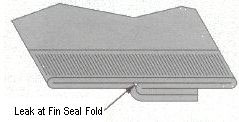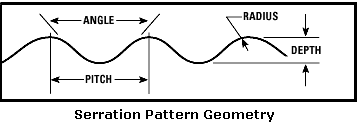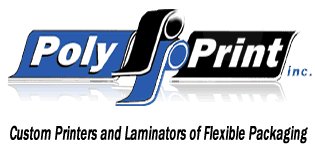Sealing Film
Sealing Theory: SEAL = HEAT + TIME + PRESSURE
The sum total of these three variables should remain constant in order to effect consistent seals. For example, if dwell time is reduced, then heat or pressure may need to be increased to compensate.
Heat & Time
The effort to regulate heat is not as straightforward as simply setting the temperature on a controller to the suggested sealing temperature of a packaging material. Machine speeds affect the temperature of the crimper or sealing jaw face, since heat is constantly being drawn off the face by the packaging material. The heat must also be sufficient to penetrate from the face of the crimper or jaw through the film or lamination to the sealant layer, and not so high that it damages the film or lamination.

The more time available for contact between the crimpers and the packaging materials (referred to as dwell time), the more heat can penetrate through to the sealant layer. As production speeds are increased, sealant layer quality and/or quantity may need to be enhanced.
Crimpers and sealing jaws can be manufactured from special materials that are especially good at transferring heat. Easy Seal Crimpers utilize a special, durable bronze alloy sealing face, and sealing jaws can also be manufactured with copper bodies and durable Hastelloy sealing faces.
Col Seal films remove both heat and time as variables, since all that is required to make a seal is pressure.
Pressure
The variability of pressure can be made constant through refinements in crimper or sealing jaw setup and design. Inadequate or uneven sealing pressure can cause end seal leaks, especially at the intersection of two and four layers of film in areas such as the fin seal, wrinkles or gussets. Sometimes additional heat or dwell time can help sealant to flow into and plug leaks in these areas, but these solutions may not be practical. Attempts to improve seals by increasing sealing pressure can cause the crimpers/jaws to split or cut the package.

Setup
On all machines the serrations need to be aligned properly. On horizontal wrappers the crimper clearance and spring pressure need to be set properly, and backlash (independent movement of the upper and lower shafts) needs to be controlled. It can take a great deal of skill and finesse to create enough pressure to seal without having excess pressure split or cut the packaging material. If no amount of adjusting allows you to achieve adequate results, then a change in the design of the crimpers or sealing jaws is necessary.
Design
Design changes can entail an upgrade to Easy Seal Crimpers and/or a change in the serration pattern. Either way, our goal is to provide even sealing pressure across varying layers of film in the end seal area.
Serration Patterns
It is rare to see crimpers and jaws on horizontal wrappers or vertical baggers with smooth faces; they almost all have some type of serration pattern. As the packaging material is stretched over the serration pattern extra sealing pressure is exerted. The serrations also cause a "shearing" action, where sealant layers from each side are forcibly mixed together, thus creating a stronger bond.
The correct geometry and precision of the serration profile are critical for achieving even pressure. In order to recommend the best serration design we need to know about the variables specific to your situation, such as film thickness and stiffness, if there are wrinkles or gussets, machine speeds and conditions, etc. The best way to start this process is to provide us with sample packages for evaluation.

The direction of the serrations is also important. Horizontal patterns are usually best at sealing off leaks, however in some cases diagonal or vertical serrations are the best choice. One study found that a switch from vertical to horizontal serrations increased shelf life by over 40%.

Easy Seal
On horizontal wrappers Quick Change Inserts allow for precise, accurate setups that can be consistently repeated, so the variability of crimper setup is significantly reduced. In addition, the flexible faces accommodate extra film layers and provide even sealing pressure across the sealing face.
Easy Seal Crimpers, couples with the proper serration profile, are the best tools for creating the even pressure necessary for dramatically improved seals.

